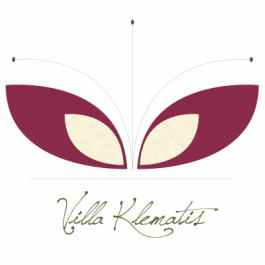Vela Luka, Korcula Island
Vela Luka is a small town and a municipality in Dubrovnik-Neretva County in southern Dalmatia, Croatia. The town is located on the western side of the island of Korcula at the bottom of a wide bay which has many indented coves and was developed at the beginning of the 19th century. Its name means "big harbour" in Croatian chakavian. Inhabitants of the Island of Korcula and Peljesac often refer to it simply as "Luka" (the port/harbour). It has several hotels and a medical centre called Kalos (for rheumatic disorders & rehabilitation). The inhabitants are farmers, fishermen and workers in tourism. The town is home for the shipyard Greben and other smaller industrial plants.
Vela Luka has a population of more than 4,000 Croats.
It has an average of over 2500 hours of sunny weather annually and is the second largest place, in size, among Adriatic islands. The diversity and richness of the cultural inheritance of Vela Luka can be seen in the museum and galleries located in the Center for Culture constructed in the second half of the 19th century near the Church of St. Joseph.
The museum/gallery is decorated with mosaics made in 1968 when the International Artist's Meeting of Painters was held in Vela Luka.
Vela Luka has many archeological and architectural points of interest. On the south slope of Pinski Rat hill there is an archaeological site. It is called Vela Spila (Big Cave) and it is one of the most important prehistoric cave dwellings in Europe. Vela Spila provides a picture of life on the Mediterranean of Mesolithic and Neolithic people living in that region. Carbon dating has shown that there was human activity going back 20.000 years and the finds are on display at the Center for Culture. The cave's interior measures approximately 1500 sq. meters and it is located several hundred meters above the beautiful Vela Luka Bay. Another panoramic view of the area can been seen from Hum Hill and the Forteca, an Austro-Hungarian fortress built in 19th century. Near by Tri Porti bay, Osjak and Proizd islands are very well worth a visit.
Vela Luka has a rich history of Klapa singing (an a cappella style) and summertime many events and contests are publicly represented.
The following is on display in the museum and the gallery:
Vela Luka has a population of more than 4,000 Croats.
It has an average of over 2500 hours of sunny weather annually and is the second largest place, in size, among Adriatic islands. The diversity and richness of the cultural inheritance of Vela Luka can be seen in the museum and galleries located in the Center for Culture constructed in the second half of the 19th century near the Church of St. Joseph.
The museum/gallery is decorated with mosaics made in 1968 when the International Artist's Meeting of Painters was held in Vela Luka.
Vela Luka has many archeological and architectural points of interest. On the south slope of Pinski Rat hill there is an archaeological site. It is called Vela Spila (Big Cave) and it is one of the most important prehistoric cave dwellings in Europe. Vela Spila provides a picture of life on the Mediterranean of Mesolithic and Neolithic people living in that region. Carbon dating has shown that there was human activity going back 20.000 years and the finds are on display at the Center for Culture. The cave's interior measures approximately 1500 sq. meters and it is located several hundred meters above the beautiful Vela Luka Bay. Another panoramic view of the area can been seen from Hum Hill and the Forteca, an Austro-Hungarian fortress built in 19th century. Near by Tri Porti bay, Osjak and Proizd islands are very well worth a visit.
Vela Luka has a rich history of Klapa singing (an a cappella style) and summertime many events and contests are publicly represented.
The following is on display in the museum and the gallery:
- The Archeological Collection from the Big Cave and other antique findings (animal & human bones, ceramic dishes, and antique amphoras)
- The International Art Collection of drawings, graphic arts, and smaller statues from local artists (Edo Murtic, Picelj, Ujevic) and foreign artists (Soto, Hayer, Messagier), all visitors and friends of Vesnin Dvori (Villa Klematis)
- Two sculptures by Henry Moore
- A Collection of ship models by Nedo Gugic
- The Ethnographic Collection of objects from Second World War Refugee Camp El Shatt (Egypt)
- Folk costumes from Vela Luka

